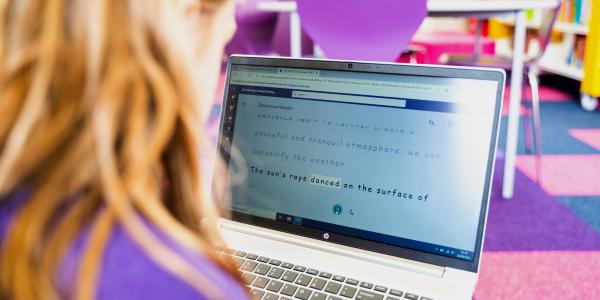Technology can make learning for students with SEND | . change Tes
[ad_1]
Technology can be an incredibly powerful tool when it comes to creating inclusive classrooms, especially when it comes to supporting students with special educational needs and disabilities (SEND).
From dictation tools that can assist students with dyslexia, to platforms that make it easier for students to understand and read with English as an additional language, to those that allow students to easily change the color and contrast of their screen, there is now a growing palette of technologies out there that teachers can use.
And the effects can be profound. “It can literally be transformative once someone starts using it [an accessibility tool]“Says Natasha Epton, Digital Curriculum Manager at Greenwood Academies Trust (GAT), which currently operates 36 academies across England. “The effect can be immediate.” But what kind of accessibility tools are there? And how can teachers best use them?
At GAT, where the proportion of EAL students at some academies is up to 75 percent, is an important tool Immersive readersays Epton. It was developed by Microsoft and offers a number of functions to aid reading and understanding. This includes dictation, a built-in picture dictionary for understanding and the ability to translate texts into 70 different languages.
For EAL students, this means that “as soon as they enter a school with no English, they will be able to access simple instructions like ‘This is the bathroom’ or ‘Bob will be your friend today’,” explains Epton. For others, it may mean assignments being read aloud by the device rather than assisting the staff next to them, freeing up their hands in the classroom.
Support communication and understanding
Immersive Reader is available for many different apps so can be used on other devices such as Apple’s. However, Speak Selection can provide a similar function. Users can simply double-tap any text to read it aloud, with the ability to adjust the speed and dialect. His Guided Access tool helps autistic students and those with other attention and sensory challenges stay on the task. A teacher can simply restrict the device to one app by disabling the home button, and even restrict touch input to certain parts of the screen.
At Cumbria’s Mayfield School, one of only six special schools in the county, many teachers also use adaptive technologies like SymWriter and Matrix Maker, explains behavioral leader and NPQLBC moderator Kara Smallman. Both solutions use symbols and images to aid communication and understanding. For example, with SymWriter, Smallman explains, “We are written the words underneath and the pictures are written over them to aid recognition” – which helps decipher the language for the students.
Another Microsoft tool that is becoming increasingly popular with educators is the ability to add live captions or subtitles in both PowerPoint and Microsoft teams, says Arran Smith, UK dyslexia and SEND consultant for Microsoft. “If you had asked me, as a severely dyslexic person, four years ago if I would have subtitled PowerPoint, I would have flatly refused,” he says. “But now I use them on calls because it helps me understand them.” And they can do the same role for students.
Also, when teachers share PowerPoint presentations, they can simply share a QR code so students can see a version at the same time, dictated in their own language and dictated at their own pace, Epton points out. “So if there is a child who has to go through something discreetly, they can do so and speed up their learning without having to attract attention.”
Non-stigmatizing productivity tools
Of course, there are many technologies that may be useful to students with SEND, such as: And that’s a really important factor at Microsoft, adds Smith, “All of these features are mainstream, they’re non-stigmatizing, and they’re free.”
For Epton, this type of display of accessibility tools is vital in removing the lingering stigma on students who may need additional assistance. For example, with Immersive Reader, “let’s turn it around and say that when you have higher skill you can use this as a proofreading tool. It immediately changes the way people think, â€she explains.
In the context of this effort to embed tools for all learners, it is important to ensure that these tools are demonstrated in the classroom, adds Jennifer King, Microsoft’s school engagement director for education: The desktop workspace is something that adults do by nature . They go into their settings, they find it, they do it. But a young person will not know that this is available to him unless he is specifically shown it. “
By simply showing it to the whole class instead of singling out students with SEND, anyone who needs it can use it.
Of course, this first of all requires access to the right technologies and devices. “Without that, the students can’t use all of these amazing resources,†says King. Which means that “it really matters to get the technology into the hands of the students”. Once that is achieved, they will have access to the growing range of tools and technologies designed to make education accessible and attractive to all.
Megan Tatum is a freelance journalist
For more information on accessibility tools, see aka.ms/LearningToolsMS
[ad_2]

